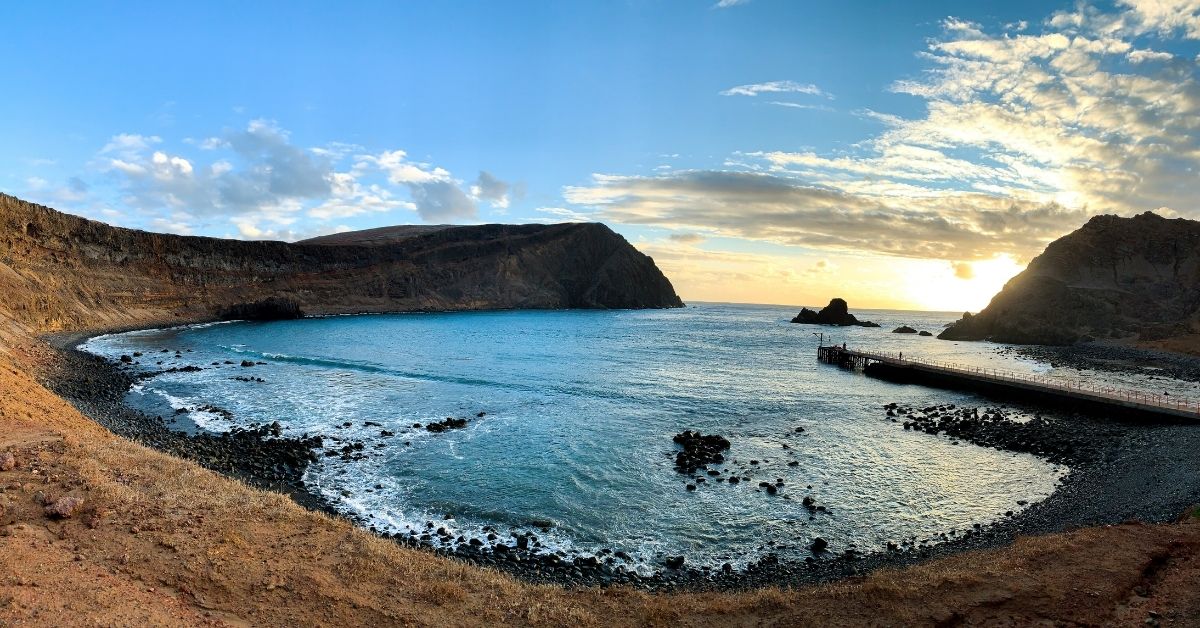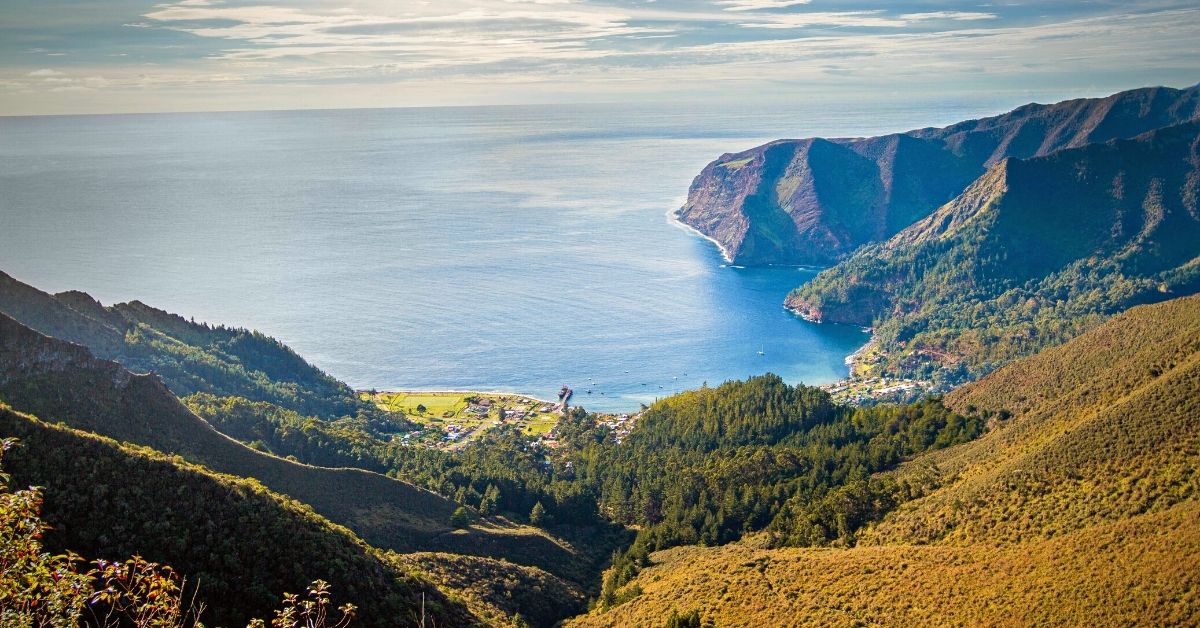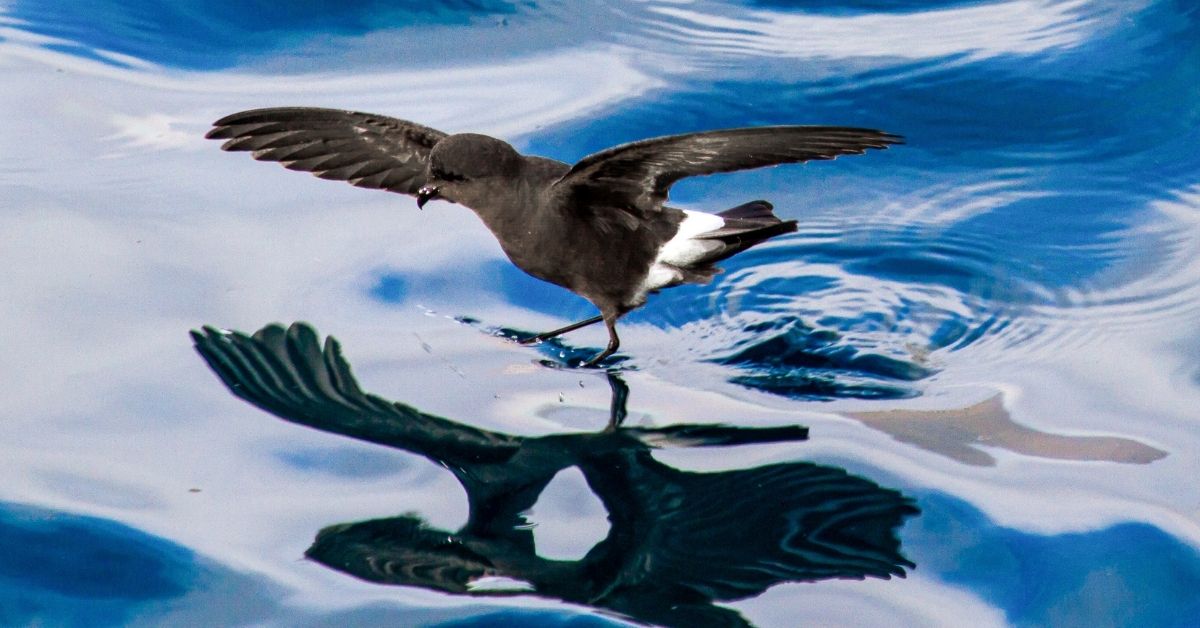A Popular Literary Island off the Coast of Chile Needs Your Help
Outlined with towering mountains that were formed by ancient lava flows, the Robinson Crusoe island is home to some of the most unique endangered species. An initiative led by Lenovo and a local NGO is working to protect them

This article has been sponsored by Lenovo.
For any student of literature, a mention of a shipwreck or being castaway on a remote island draws comparison with the legendary story of Robinson Crusoe. Written by English novelist Daniel Defoe, the book, although a work of fiction, bears resemblance to a real-life story and very real island.
Today, the island that inspired Defoe’s most famous work is a global travel destination, but for reasons more than literary.
In the 18th century, the story of Alexander Selkirk created a sensation in London. He was a Scottish sailor who suffered a shipwreck in 1704, leaving him marooned on a remote island for four years and four months. In 1709, he was finally rescued by a British ship and brought to London, where he became a celebrity of sorts.
This story eventually inspired English writer Daniel Defoe to write his most famous novel, Robinson Crusoe. But neither Selkirk nor Defoe can be credited for the island’s discovery. It was a Spanish explorer Juan Fernández who is said to have discovered the archipelago in 1574, en route to Peru and Valparaiso.
An anchor of reality in Defoe’s work of fiction, the Robinson Crusoe island, is, however, far from what the novelist describes. Sun-kissed Caribbean paradise with pristine beaches hemmed with palm trees, that Defoe’s shipwrecked protagonist Crusoe calls ‘The Island of Despair’, is not how the real island is.
Although a paradise in its own right, the actual island that inspired Defoe’s fantasy is a natural marvel in urgent need of conservation and protection.
Literary fame to environmental marvel

English literature’s most famous ‘deserted island’, Mas a Tierra, now known as Robinson Crusoe island is unique and home to some of the most endangered species in the world. Located 700 km off the coast of Chile, this island, often shrouded in mist, is the largest in the Juan Fernandez Islands, which is a tiny archipelago in Chile.
Outlined with towering mountains that were formed by ancient lava flows, the island’s steep ridges and valleys cradle the unique flora and fauna. For instance, more than 100 out of the 146 native species of plants are endemic to this island and Isla Robinson Crusoe is the only place where you can spot the endangered black-beaked fiery red Juan Fernandez Firecrown (Sephanoides fernandensis) hummingbird.
While its literary popularity led the Chilean government to rename it from Mas a Tierra (meaning closer to land) to Robinson Crusoe in 1966, it is the island’s unique biodiversity that has made it a global travel destination. Its ecosystem is even more incredible than the Galápagos Islands.
Owing to this the Chilean government in 1935 granted its national park status and in 1977, to protect its natural biodiversity, UNESCO declared the islands of the archipelago a World Biosphere Reserve. UNESCO under its ‘Man and Biosphere’ program has labelled the Robinson Crusoe island an international conservation hotspot. These efforts have created a grassroots impact by helping the population of endangered species like the fur seal, recover substantially.
Things to do at Robinson Crusoe

For history and literary buffs, retracing Selkirk’s steps by visiting his cave home can be an exciting venture. It is situated in Puerto Ingles Beach, which is 10 miles from the San Juan Bautista village, Cumberland Bay. There are several guided hikes and trekking trips one can choose from.
There are many bird watching tours along with surfing and scuba diving trips. Scuba diving is exceptionally popular here owing to its diverse and rich marine ecosystem that includes moray eels, wrasses, sea lions, fur seals, butterflyfish and different types of crustaceans. You can also visit the wreck of the German cruiser Dresden for a unique experience.
For those who are looking for more, the island is also hosting a unique working experience initiated by Lenovo in partnership with the local NGO, Island Conservation.
Closely working with the local community that majorly depends on the marine ecosystem, the NGO and Lenovo through the initiative Work For Humankind, is facilitating an opportunity for volunteers to embrace a new way of working remotely. Empowered by Lenovo’s smart technology, selected volunteers can work remotely for one month while volunteering 20 hours a week for conservation activities.

These include preserving both the indigenous communities and the endangered species, like the Juan Fernández Firecrown, fur seals, Masafuera Rayadito, and the Pink-footed Shearwater.
“Work for Humankind will send select volunteers with a range of skills, backgrounds, and specialities to Robinson Crusoe to help prevent the extinction of endangered species and support the local community as it works toward achieving sustainability, all while being able to continue working their current jobs remotely. This will be done through several life-changing restoration projects in partnership with Island Conservation and the local community on Robinson Crusoe Island, including developing much-needed connectivity solutions for the Island’s infrastructure,” Lenovo’s public release stated.
This is a new vision to create a work-life balance that is not only productive but also helps create massive grassroots impact. Stay tuned for more information on how these volunteers are changing the world while balancing a full-time career.
If you found our stories insightful, informative, or even just enjoyable, we invite you to consider making a voluntary payment to support the work we do at The Better India. Your contribution helps us continue producing quality content that educates, inspires, and drives positive change.
Choose one of the payment options below for your contribution-
By paying for the stories you value, you directly contribute to sustaining our efforts focused on making a difference in the world. Together, let's ensure that impactful stories continue to be told and shared, enriching lives and communities alike.
Thank you for your support. Here are some frequently asked questions you might find helpful to know why you are contributing?


This story made me
-
97
-
121
-
89
-
167














